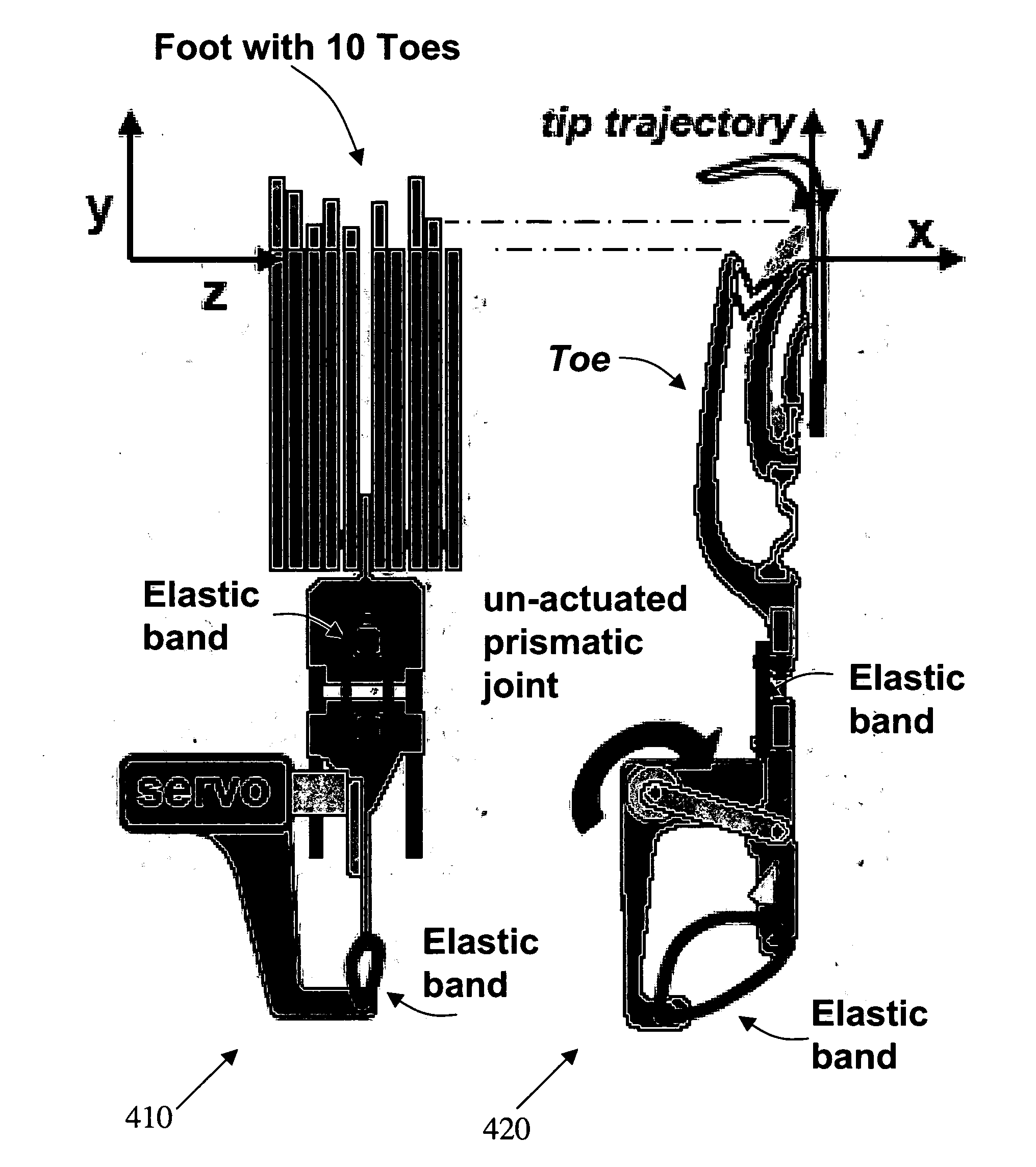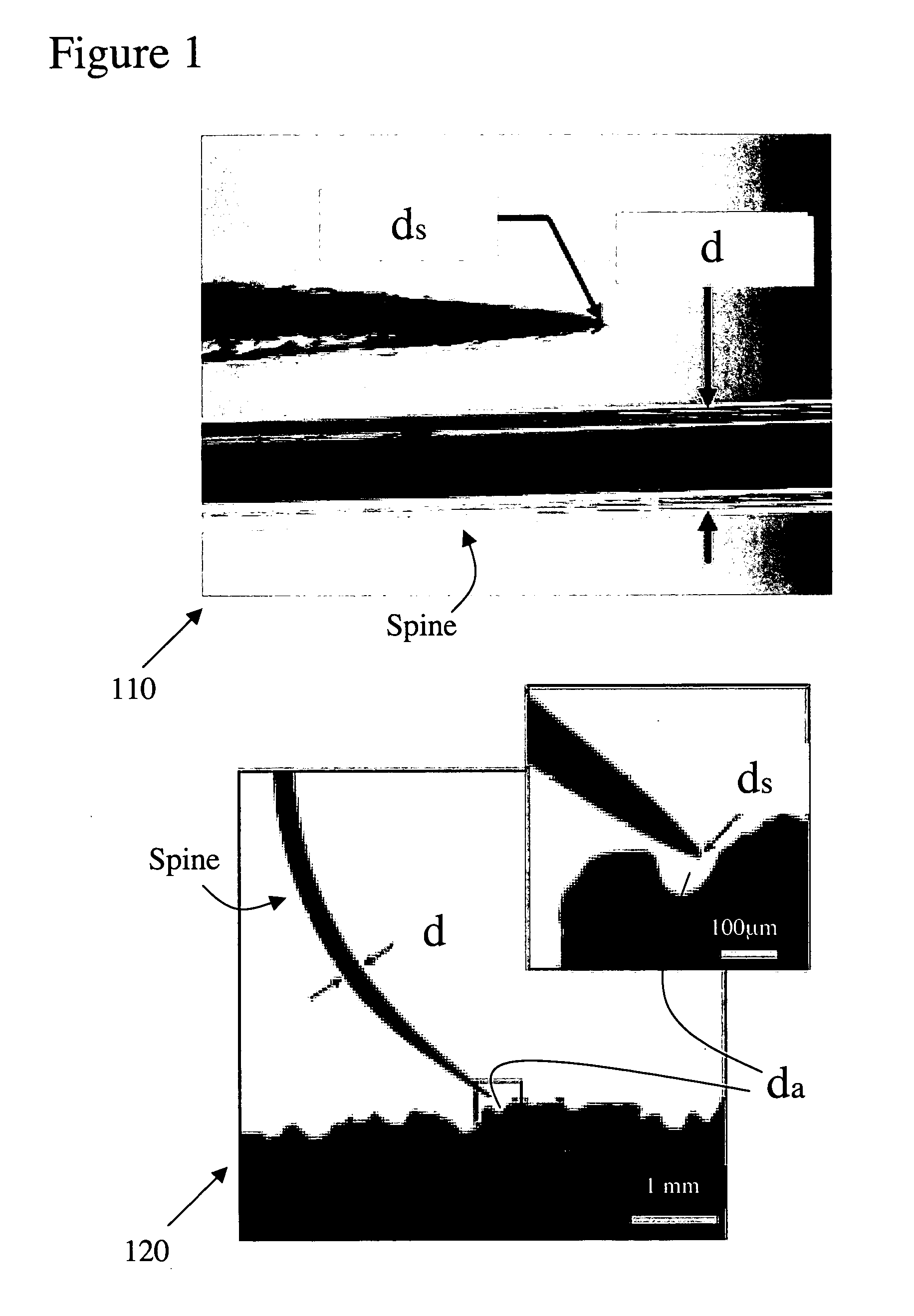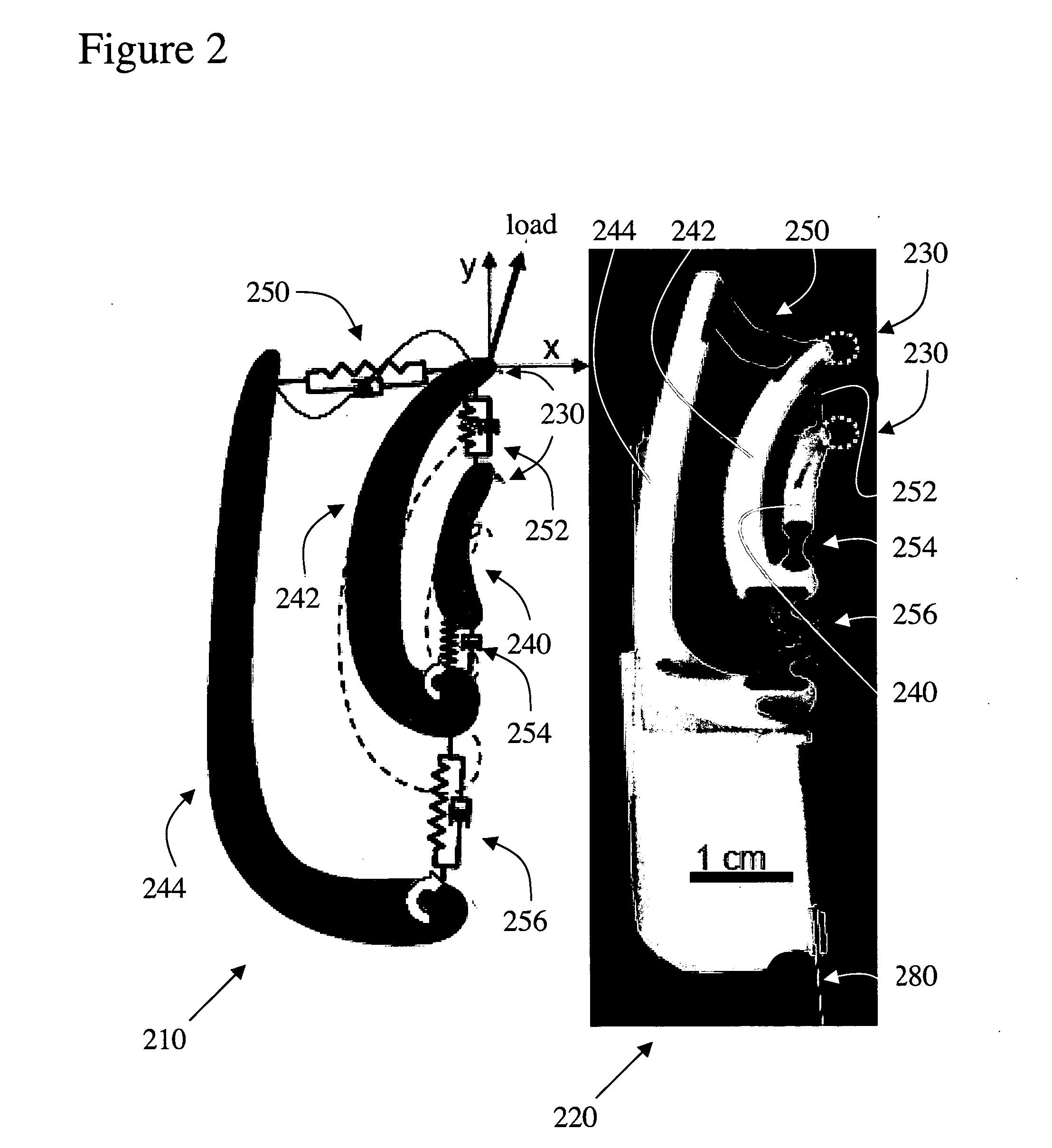Biologically inspired climbing device
a technology of climbing device and biological inspiration, which is applied in the direction of manipulators, manufacturing tools, gripping heads, etc., can solve the problems of consuming a large amount of power, not suitable for porous and typically dusty exterior surfaces, and climbing and maneuvering on vertical surfaces are more difficult challenges, and achieve the effect of low power
- Summary
- Abstract
- Description
- Claims
- Application Information
AI Technical Summary
Benefits of technology
Problems solved by technology
Method used
Image
Examples
Embodiment Construction
A. Spines in Nature
[0020]Insects and arthropods that climb well on man-made and natural surfaces often use legs equipped with large numbers of small, sharp spines. Even geckos that frequently rock surfaces such as cliffs and caves have small claws on each toe in addition to their dry adhesive structures. Unlike the claws of a cat, the small spines or claws do not need to penetrate the surface. Instead, they exploit small asperities (bumps or pits) on the surface. Several studies in the biology literature have considered the problem of spine / surface interaction. For example, Dai et al. (2002) presented a planar model of spine / asperity contact and computed the maximum load per spine as a function of spine strength, relative size of the spine tip versus that of an asperity, and coefficient of friction (see Dai et al. (2002) in a paper entitled “Roughness-dependent friction force of the tarsal claw system in the beetle Pachnoda marginata (Coleoptera, Scarabaeidae)” and published in The ...
PUM
 Login to View More
Login to View More Abstract
Description
Claims
Application Information
 Login to View More
Login to View More - R&D
- Intellectual Property
- Life Sciences
- Materials
- Tech Scout
- Unparalleled Data Quality
- Higher Quality Content
- 60% Fewer Hallucinations
Browse by: Latest US Patents, China's latest patents, Technical Efficacy Thesaurus, Application Domain, Technology Topic, Popular Technical Reports.
© 2025 PatSnap. All rights reserved.Legal|Privacy policy|Modern Slavery Act Transparency Statement|Sitemap|About US| Contact US: help@patsnap.com



